When my parents retired they moved out of their house of almost twenty-five years in the Los Angeles area. Not wanting to pick favorites between their two children they decided on a modest house in a new development in Oceanside, halfway between my sister and me.
Like many new homes the landscaping that came with the place was bare-bones: lawn, with a single podocarpus sapling next to the front curb. The blank slate excited my mother, who was looking forward to putting her stamp on a new piece of property. I helped her plan the yard, construct the raised beds, move dirt and do some of the planting. In the end, though, almost all the plant selections were hers: oleanders, pittosporum, geraniums, roses, azaleas, agapanthus, bird of paradise, Japanese maple, citrus, stone fruit trees, plus selections from the other plants that were being promoted twenty years ago.
When my mother died in the late 90s it left my father with a yard that wasn’t exactly what you’d call low-maintenance. And Oceanside wasn’t a quick drive up for me so that I could help tend it. Several years later he moved out, leaving the gardener’s garden in the hands of renters, many of whom never watered or tended it.
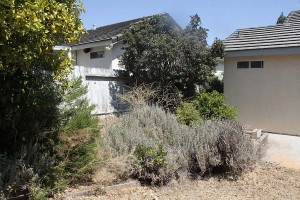
Last summer I had a chance to stop by the house for what will probably be my last visit. Many plants were still alive, thanks in part to what had been a moderately moist winter and spring, with more thanks probably going to the neighbors who watered their lawns and unknowingly kept the ground moist for thirsty roots from next door to sneak under the side fence.

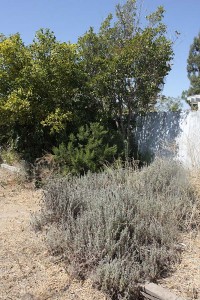

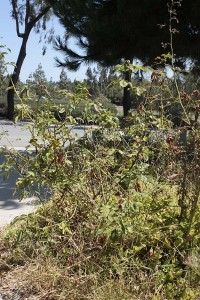

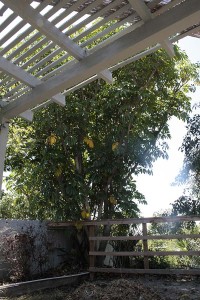

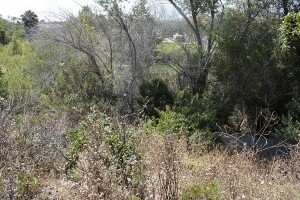
The house is in the hands of new owners now. They’ll probably look at the ragged plantings and decide to start fresh, removing most of the scrappy plants and making the yard their own.
If I hadn’t seen the yard in its current state I might have felt protective or territorial. But this visit allowed me to let go. This was once a comfortable and beautifully maintained garden that gave my parents joy. I have those memories, but I realize that’s not what the garden is anymore.
I now feel at peace with whatever the new owners will want to do with the yard. I wish them well.
